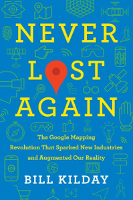Start-Up Culture | Science & Technology Reviews
In his first book, technology journalist Fisher weaves first-person accounts of Silicon Valley’s history as an incubator of computer culture and commerce. A bit of an unconventional oral history, this book contains separate interviews that are compiled alongside quotations from speeches or other print publications. While undoubtedly losing some of the give-and-take and triggered memories of a group interview, it does allow for a more cohesive chronological and thematic arrangement, since many of the key players were involved in Silicon Valley for decades with different companies. Starting with Stanford, Atari, Xerox PARC, and Apple, the hardware, software, and ancillary corporate culture and publications fostered in these San Francisco suburbs are remembered and analyzed by those on the front lines. Later chapters chronicle the rise of the web, the dot com financing boom and bust, and the corporate cultures of Google, Facebook, and Twitter. The “uncensored” of the subtitle mostly refers to the drama of large personalities interacting and a pervasive drug culture. VERDICT This behind-the-scenes account of modern start-up culture will interest technology geeks and business historians alike.
Kilday, Bill. Never Lost Again: The Google Mapping Revolution That Sparked New Industries and Augmented Our Reality. Harper Business. May 2018. 368p. notes. ISBN 9780062673046. $29.99; ebk. ISBN 9780062673053. TECH
 In this Silicon Valley corporate memoir, Kilday (marketing director, Google Geo) tells the story of his years at a mapping software company that became the basis for Google’s Map and Earth products. In 2001, Kilday was recruited by his college friend John Hanke to do business-to-business marketing for the digital map start-up Keyhole. Their EarthViewer product, with its smooth panning and visually arresting “flyovers” using satellite and aerial images, caught the eye of Google. Just after the 2004 Google IPO, it acquired the company in a bid to unseat MapQuest as the dominant web-based mapping service. More importantly, Google wanted to get into the geographic search business to enhance its ad revenue. By releasing the Google Maps and Google Earth products for free, they soon achieved dominance. Eventual integration with the first iPhones and other mobile devices helped transform how we orient ourselves and revolutionized GPS navigation, autonomous cars, and augmented reality implementations (such as the Pokémon GO app). VERDICT At the intersection of business and technology, this will appeal especially to those fascinated with start-up to postacquisition corporate culture at a Google-acquired company.
In this Silicon Valley corporate memoir, Kilday (marketing director, Google Geo) tells the story of his years at a mapping software company that became the basis for Google’s Map and Earth products. In 2001, Kilday was recruited by his college friend John Hanke to do business-to-business marketing for the digital map start-up Keyhole. Their EarthViewer product, with its smooth panning and visually arresting “flyovers” using satellite and aerial images, caught the eye of Google. Just after the 2004 Google IPO, it acquired the company in a bid to unseat MapQuest as the dominant web-based mapping service. More importantly, Google wanted to get into the geographic search business to enhance its ad revenue. By releasing the Google Maps and Google Earth products for free, they soon achieved dominance. Eventual integration with the first iPhones and other mobile devices helped transform how we orient ourselves and revolutionized GPS navigation, autonomous cars, and augmented reality implementations (such as the Pokémon GO app). VERDICT At the intersection of business and technology, this will appeal especially to those fascinated with start-up to postacquisition corporate culture at a Google-acquired company.
ALREADY A SUBSCRIBER? LOG IN
We are currently offering this content for free. Sign up now to activate your personal profile, where you can save articles for future viewing









Add Comment :-
Comment Policy:
Comment should not be empty !!!